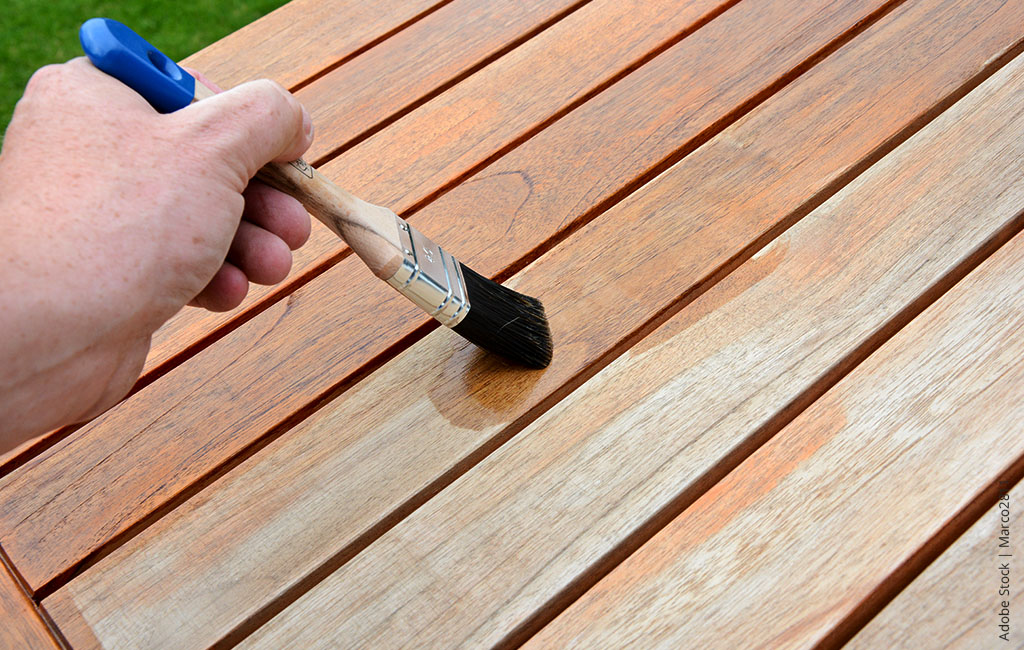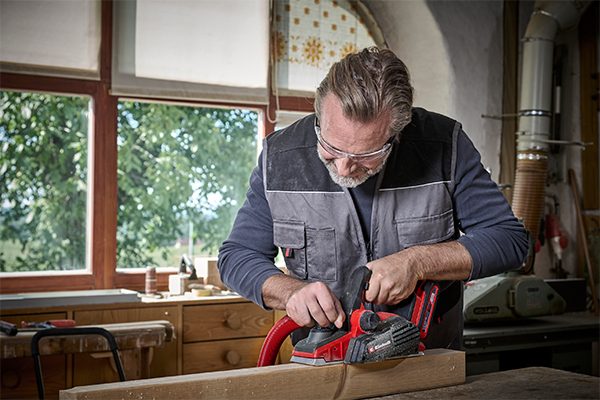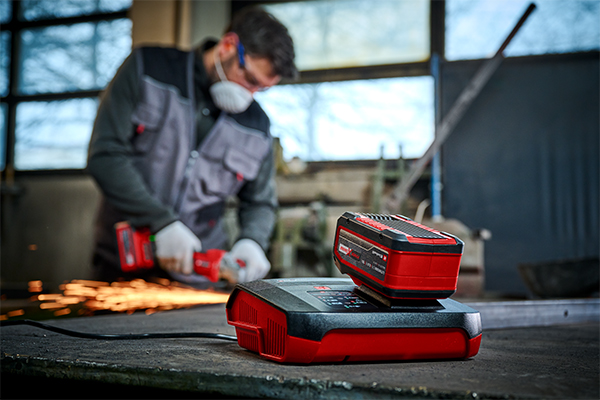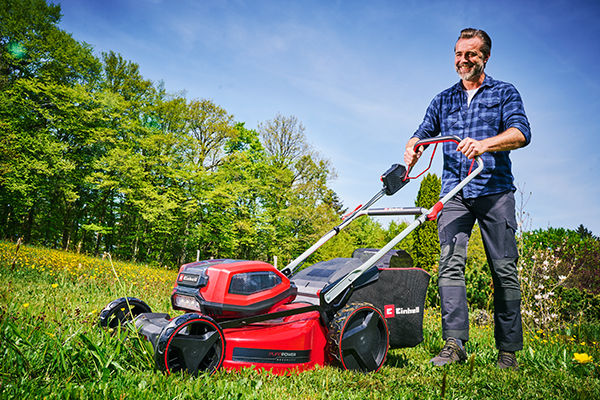Outdoor spring cleaning: How to make your terrace or patio look its best
Spring has arrived, and the warm rays of the sun lure us back out into the garden. But we all know what it's like: Winter has left its mark and the terrace, driveway and yard are covered with dirt, leaves and other debris. So, it's high time for an outdoor spring clean! But what is the best way to go about this, and what should you pay attention to?
In this blog post we will share some tips and tricks for outdoor spring cleaning. In particular, we will explain how to clean hard and soft outdoor floor coverings such as paving slabs, natural stone floors and wooden terraces, as well as introducing the tools to make the job easier. So, what are you waiting for? Let's get your outdoor oasis sparkling together!
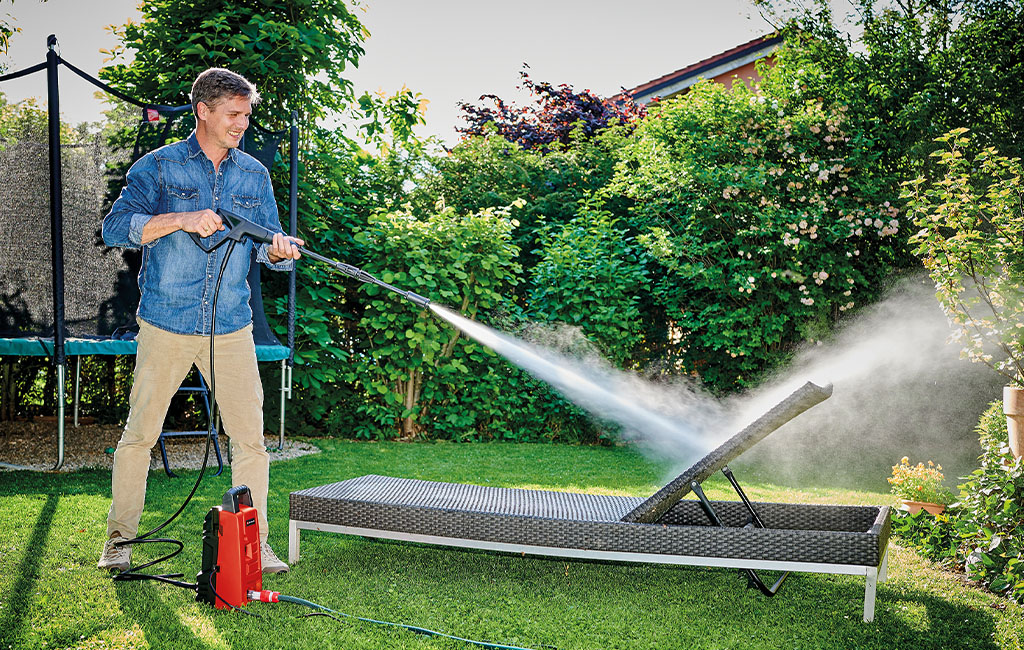
Good riddance to winter grime: it's time to add some shine to your outdoor space
After a cold and wet winter, it can't be helped: your outdoor areas don't look as clean and neat as they did before. Terraces in particular suffer from the autumn leaves and the winter weather. For example, wooden decks are often discolored by rain, frost and UV exposure. This layer of weathering is called a "patina". While patinas are often even added deliberately to give a vintage and "shabby chic" look, they are usually rather unwelcome on wooden decking. But don't worry! With the right equipment and a little time, your deck can be back ready for use.
Tools for thorough cleaning
- High-pressure cleaner
- Cordless surface brush
- Cordless grout cleaner
- Cordless push sweeper
- Cordless leaf blower
However, it is important to bear in mind that different materials require different cleaning methods. Surfaces made of paving slabs need to be treated differently to natural stone patio tiles or wooden decks. For example, a high-pressure cleaner is not always the best choice for certain stone floors. In order to avoid scratches or damage, the right cleaning tool should be chosen according to the type of patio tile. The choice of brush and the use of gentle cleaning agents is also extremely important when it comes to wooden decking. And let's not forget about those gaps in which dirt and weeds are often found, especially with stone floors.
In short: to clean your patio or courtyard driveway properly, it is important to take into account the specific requirements of the different floor coverings. However, with the right tools and techniques, any floor can be restored to tip-top condition.
The necessary preparation: Tidying up before cleaning
Before you get stuck into cleaning your patio or driveway, you should make sure that area has been cleared of any coarse dirt and debris. First, remove any garden furniture or other free-standing objects and decoration from the area. Furniture that has been left outside over the winter can be cleaned separately, ensuring that the entire terrace gleams again in the end.
Incidentally, the best way to remove the heavy dirt is by a quick lap with the cordless push sweeper. This automatically sweeps dirt, stones and loose leaves into its waste container thanks to the Power X-Change battery drive. If there are many leaves lying around, a cordless leaf blower or leaf vacuum is a good choice.
- Extra tip: Leaves and dirt also accumulate in gutters. With a cordless leaf blower and gutter-attachment set, you can blow them out easily. So not only will you have a clean terrace, but also clear guttering through which rainwater can drain away properly.
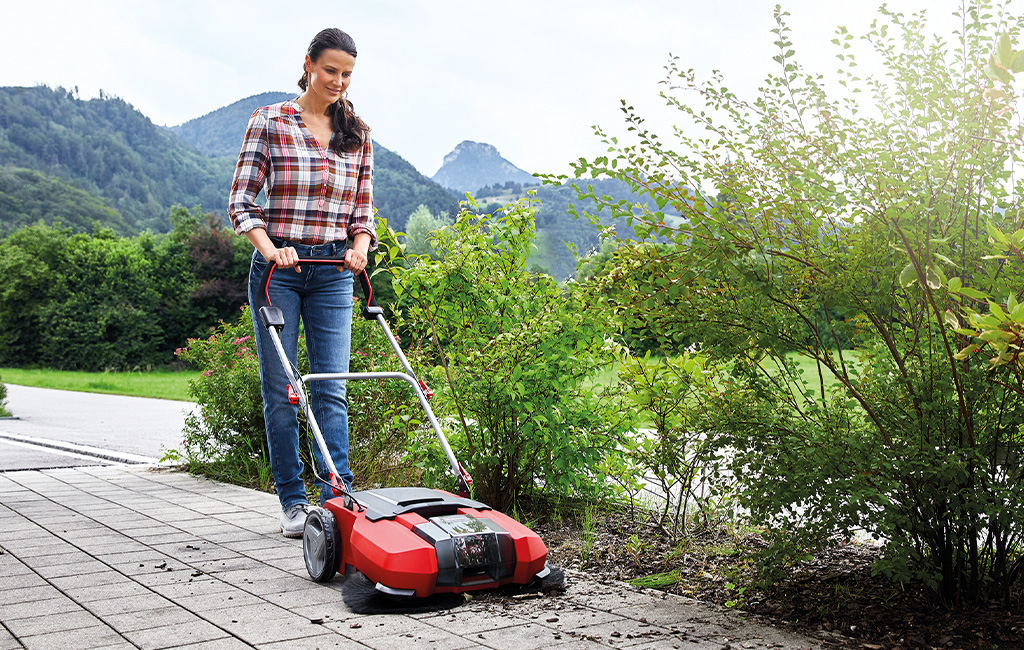
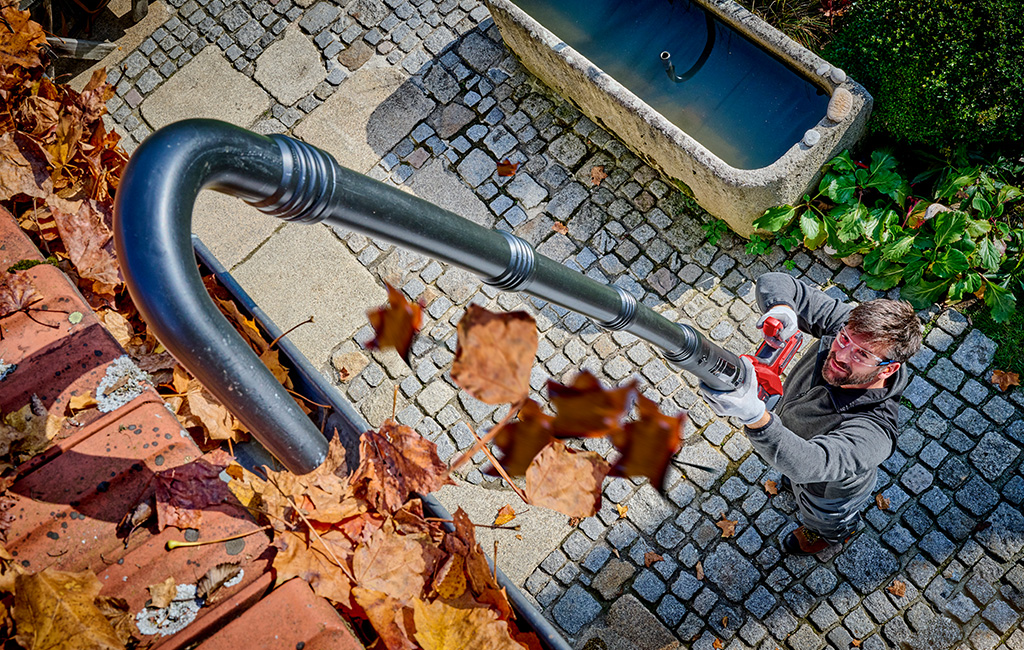
How to thoroughly clean hard stone floors
Stone floors are generally more robust than timber floors and less susceptible to weathering. Nevertheless, over time they can still become stained. In particular, films of oil, algae and moss can form on the pavers. There are two options to eliminate these: chemical and mechanical cleaning of the stone floors. Instead of using aggressive chemicals, with the right Einhell tools, you can also clean your terrace in an environmentally friendly way. The appropriate cleaning equipment in each case depends on the type of paving slabs.
Hard stone - easy cleaning
Usually, the harder the stone, the less sensitive it is. Paving blocks made of concrete, composite stone or very coarse, hard natural stones such as granite, basalt, quartzite and porphyry can usually handle somewhat "rougher" treatments. You can clean these using the high-pressure cleaner, along with the surface cleaner if necessary. The PICOBELLA cordless surface brush can also remove heavier grime when used in combination with the ULTRA brush. The tough steel brush removes stubborn dirt, deposits, lichen, moss and rust without any problems. However, care must be taken with polished, ground or sealed natural/artificial stone surfaces and basalt.
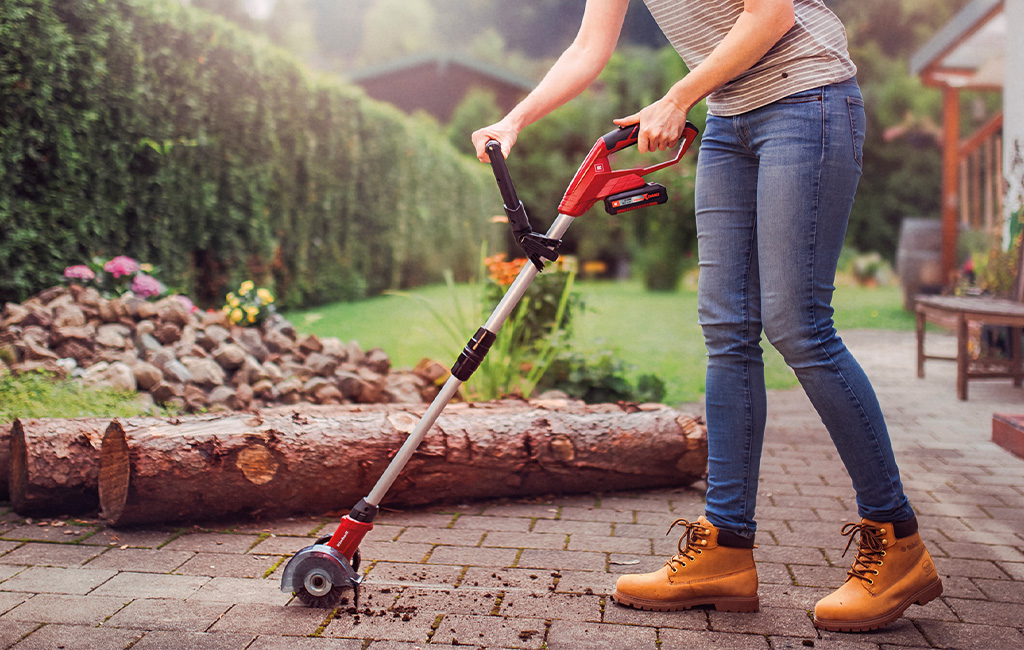
Don't forget the grouts: clean paving stones alone do not make the perfect appearance. The gaps between them should also be cleaned, for example with the cordless grout cleaner. The wire brush removes dirt and weeds, but should only be used on paving stones that are resistant to scratching. You may want to add new sand to the joints afterwards.
Smooth, unsealed stone floors
Smooth paving stones and stone surfaces that have not been sealed can be cleaned with the PICOBELLA and the MEDIUM brush. This includes, for example, tiles, concrete blocks and terracotta. For stubborn dirt, cleaning in both brush rotation directions (forward and reverse) can be helpful. If you are especially careful, you can also try using a high-pressure cleaner on the paving stones. But keep enough distance between the nozzle and the stones, and work with lower pressures if possible. If you are unsure of what your flooring can withstand, you should always test your "cleaning method" in a more unobtrusive place beforehand.
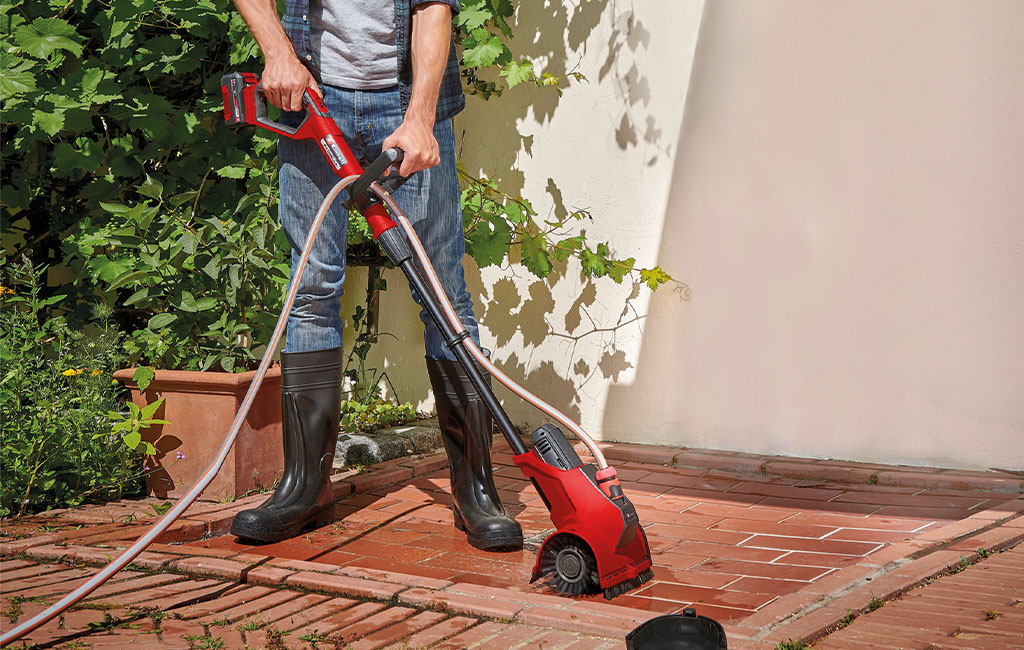
Sensitive soft natural stone floors
Stone can also be delicate. For example, natural stones such as marble, limestone, slate or travertine are easily scratched. Even a high-pressure cleaner can damage these patio tiles if the water pressure is too high. In addition, cleaning marble with too much water can quickly give it a dull appearance. It's best to clean such sensitive floors only with clean water and a soft brush with natural bristles. Alternatively, you can simply clean the floor with a mop, just as you would indoors.
How to make your wooden deck sparkling clean
A wooden deck gives any garden a warm and cozy atmosphere. But maintaining this homely feel requires regular cleaning and care for the wood. Weathering and UV exposure can alter material, often resulting in an unwanted grey haze. But it's not just the appearance that suffers. If the wooden terrace is unpainted, moisture can penetrate the cracks and pores in the wood. This creates the perfect conditions for fungi to breed. To ensure that you can enjoy your terrace for as long as possible, we will show you what you should pay attention to when maintaining it.
Distinction: decks made of hardwood vs. softwood
Depending on the type of timber from which the terrace is constructed, you should follow different approaches. Hardwoods such as bamboo, Bangkirai or Kempas are very resilient; they usually have no problem with the water pressure of the high-pressure cleaner. Softwoods such as larch or Douglas fir, which may be damaged by high-pressure cleaning, are also widely used as decking for terraces. In any case, no matter the wood, the cordless surface brush PICOBELLA is the perfect choice.
Procedure
- Sweeping: The worst of the dirt should be removed regularly, but especially before extensive cleaning. Caution: Use a broom with soft (natural) bristles. Bristles that are too stiff may scratch the wood.
- Wet cleaning: To gently clean and maintain your wooden deck, you can use the PICOBELLA battery surface brush with the SOFT brush. Connected to the garden hose, you spray water on the wood while at the same time brushing away dirt and grime. This works gently and without chemical or acidic cleaning agents that might attack the wood. Always make sure to clean the wood in a lengthwise direction, going with the grain of the wood fibers. Basically, we recommend that you clean the planks one at a time, or one deck board at a time.
- Allow to dry: Before treating the wood any further, you should allow it to dry sufficiently. In dry weather, you should give the deck at least 24 hours.
- Do not forget "hidden" areas: leaves and dirt often fall between the timber planks and slip under the deck. A cordless leaf blower makes clearing out these "dirt traps" a breeze!
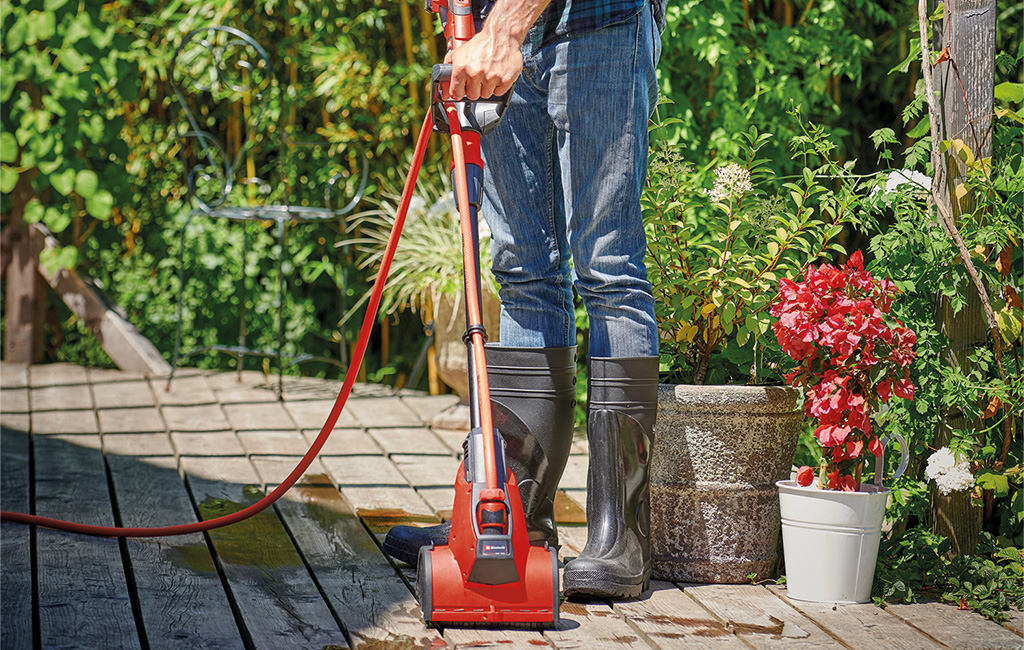
Restoration tips:
- Restoring wood color: Has your wooden deck "lost" its color? You can refresh the wood using a degreaser, which gently lightens the wood. Use the grease remover according to the manufacturer's instructions. You usually have to moisten the surface of the wood before applying the degreaser with a brush. After it has soaked in long enough, it should be rinsed off with plenty of water and a brush. Pinsel aufträgst. Nachdem er lange genug eingezogen ist, sollte er mit genug Wasser und einer Bürste ausgewaschen werden.
- Remove green layers: If your deck has grown green layers, it is often enough to brush them away with the PICOBELLA surface brush and plenty of water.
Extra tips: Terrace and yard maintenance and protection
Overall, you should maintain your patio, driveway and terrace regularly. In particular, you should always make sure to remove heavy soiling, because stains or, for example, bird droppings can dry out under sunlight. These stubborn marks then become all the more difficult to remove from paving slabs and timber surfaces.
Want to give your timber flooring a little extra attention? After the regular cleaning, you can treat it with a conditioning oil suitable for the respective wood species. Applying oil smooths the wood's surface and creates a water and dirt-repellent layer. Depending on the oil you choose, you can revive the color of the wood (transparent oil) or even change it if you want to (tinted oil). Ideally, you should oil your wooden deck when the sky is overcast, or when the deck is in the shade. It's best not to do it in direct sunlight, as the oil will dry too quickly and will not be absorbed into the wood properly.
